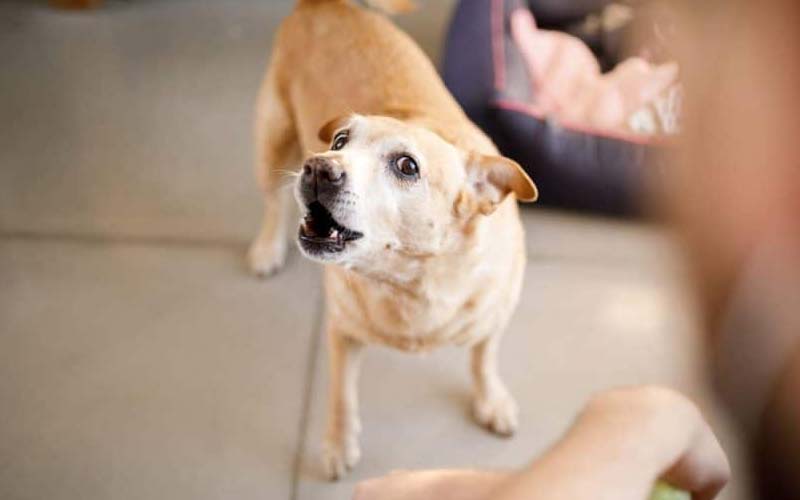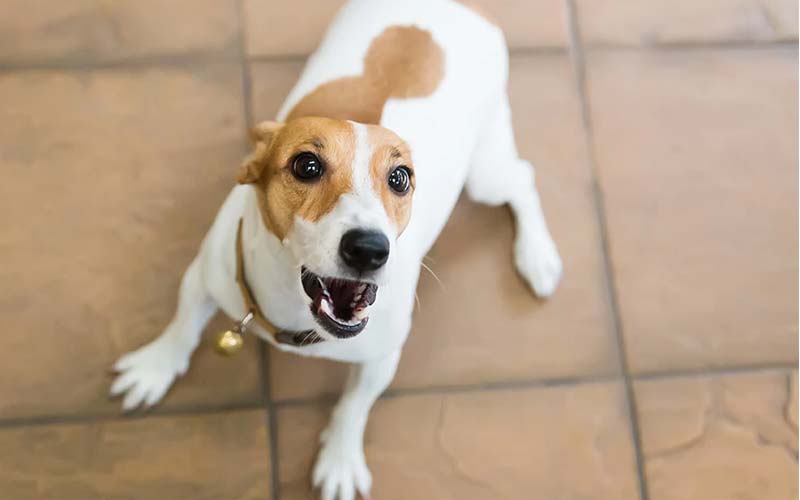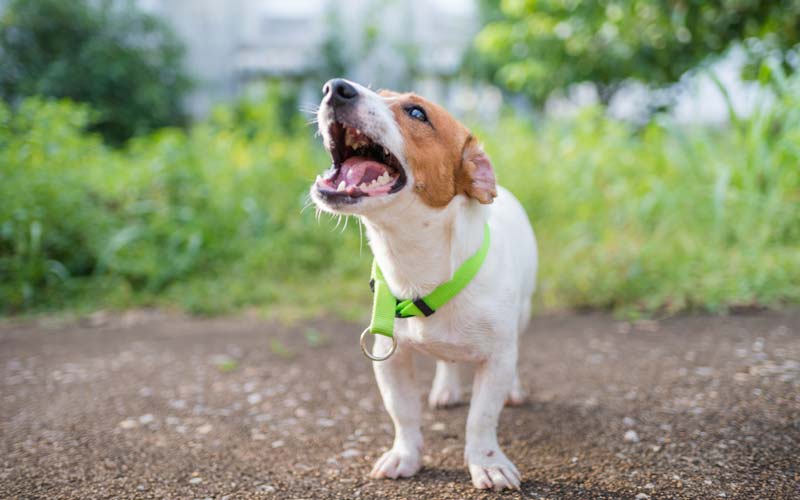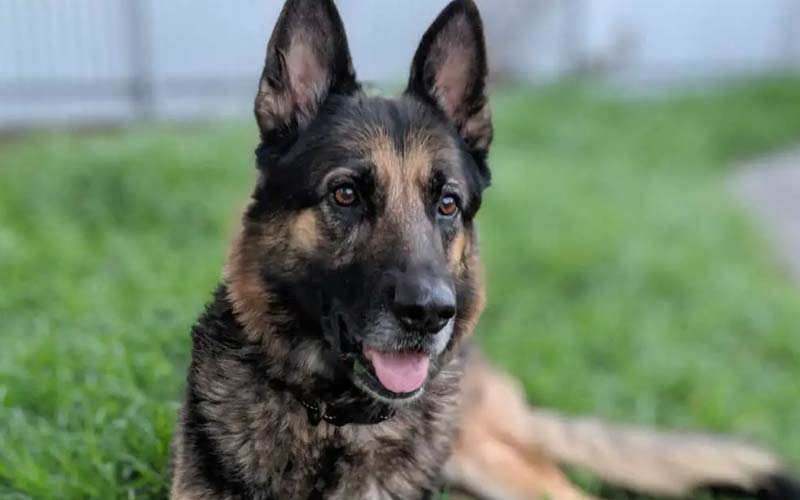Owning a dog brings immeasurable joy and companionship, but sometimes, a dog’s loyalty can manifest as overprotectiveness. While it’s natural for dogs to be watchful of their families, overprotective behavior can become problematic, straining relationships and creating unsafe situations. Recognizing and addressing this behavior is essential not only for your dog’s well-being but also for maintaining harmony in your household.

Overprotectiveness often stems from fear, lack of socialization, or inadvertently reinforced behaviors. For example, a dog that barks or growls at strangers and is comforted in those moments may interpret the attention as approval. Left unchecked, this behavior can escalate, making it difficult for you to welcome guests, enjoy walks, or even interact with other family members without conflict.
This article will guide you through understanding the causes of overprotective behavior, recognizing its signs, and implementing practical strategies to manage it effectively. With patience and the right approach, you can transform an overprotective dog into a well-balanced companion, fostering a safer and more peaceful relationship for everyone involved.
1. Understanding Overprotective Behavior
Definition and Context
Protective behavior is a natural and often desirable trait in dogs. Many breeds are hardwired to protect their owners, territory, and pack. However, when this instinct becomes excessive, it crosses into overprotectiveness, where a dog sees threats everywhere and acts out inappropriately. Unlike a protective dog that responds to genuine threats, an overprotective dog often reacts defensively to harmless situations, making daily life challenging.
Common scenarios include a dog barking or growling at visitors, lunging at strangers during walks, or physically placing themselves between their owner and others. These behaviors, while rooted in loyalty, can escalate into aggression if not addressed.
Causes of Overprotective Behavior
Lack of Socialization
- Dogs that have limited exposure to various people, animals, or environments may view the unfamiliar as a threat.
- Early socialization helps dogs develop confidence and reduces fear-based reactions.
Fear or Anxiety
- Nervous or insecure dogs often become overprotective as a way to cope with their own fear.
- Triggers might include loud noises, unfamiliar faces, or chaotic environments.
Past Trauma
- Dogs with a history of abuse or neglect are more likely to form strong attachments to a single person and develop guarding behaviors.
- Their overprotectiveness is a defense mechanism born from survival instincts.
Reinforcement of Bad Habits
- Owners may unknowingly encourage overprotectiveness by comforting their dog during reactive episodes, such as barking at strangers.
- Positive reinforcement of calm behavior is key to breaking this cycle.
Signs to Watch For
Understanding the warning signs of overprotective behavior can help you address it before it escalates:
Aggression
- Growling, barking, or lunging at people, animals, or even family members.
- Often directed at perceived threats, even in safe or familiar environments.
Blocking Owner Interactions
- Physically positioning themselves between you and others, including family members or friends.
- Preventing others from approaching or engaging with you.
Over-Vigilance
- Hyper-alertness in the home, such as pacing, staring at doors or windows, and reacting to every sound.
- Increased tension and difficulty relaxing during walks or outings.
By understanding the root causes and recognizing the signs, you can take the first step toward managing overprotective behavior in your dog. The following sections will provide actionable strategies to address and reduce these behaviors effectively.

2. The Risks of Ignoring Overprotectiveness
Overprotectiveness in dogs is more than an inconvenience—it’s a behavior that, if left unaddressed, can lead to significant challenges for both you and your pet. Understanding the risks of ignoring this issue underscores the importance of taking action to manage it effectively.
Potential for Escalation into Aggression
What begins as growling or barking can quickly escalate into full-blown aggression. Overprotective dogs may lash out at perceived threats, whether they are visitors, strangers on walks, or even family members. This behavior can result in bites or other dangerous encounters, which could lead to legal consequences, strained relationships, and, in severe cases, the need to rehome the dog.
Strained Relationships with Family, Friends, and Other Pets
An overprotective dog may make it difficult to enjoy harmonious relationships within the household or social circle. Friends and family might feel unwelcome or unsafe visiting your home, while other pets could become targets of your dog’s guarding instincts. These behaviors can create tension and reduce your dog’s ability to integrate into a balanced, happy family environment.
Safety Concerns for Both the Dog and Others
Overprotective behavior can put everyone at risk. A lunging or barking dog on a walk, for instance, could cause accidental injuries or provoke aggression in other dogs. Additionally, your dog’s safety is at stake—if their behavior leads to an altercation or accident, they could be injured or subjected to legal consequences.
Negative Impact on the Dog’s Mental Well-being
Dogs that are constantly overprotective often experience high levels of stress and anxiety. The heightened vigilance takes a toll on their mental health, preventing them from relaxing and enjoying normal activities. Over time, this chronic stress can lead to other behavioral problems, health issues, and a lower quality of life.
Ignoring overprotectiveness not only exacerbates the problem but also places unnecessary strain on both you and your dog. Addressing the behavior early can prevent these risks and set the foundation for a safer, happier, and more balanced relationship with your pet. The next section will delve into actionable strategies to help you manage and reduce overprotective tendencies effectively.

3. Actionable Strategies for Managing Overprotectiveness
Effectively managing an overprotective dog requires a combination of leadership, training, and environmental adjustments. Here are practical strategies to help you address the behavior and foster a more balanced relationship with your dog.
A. Establish Leadership and Boundaries
A strong, confident leader helps an overprotective dog feel secure and reduces its perceived need to guard you.
- Consistent Training: Reinforce your role as the leader by practicing obedience training daily. Commands like “sit,” “stay,” and “down” establish your authority while building trust.
- Set Clear Boundaries: Define what behaviors are acceptable inside and outside the home. For example, teach your dog that barking at the door is fine initially but not continuously.
- Control Interactions: Avoid letting your dog decide who can or cannot approach you. Guide your dog’s interactions calmly, signaling that you’re in charge.
B. Gradual Socialization
Socialization helps your dog understand that not every new person, pet, or environment is a threat.
- Introduce New Experiences Slowly: Begin with low-stress settings, such as meeting a calm friend in a quiet park. Gradually increase exposure to busier environments as your dog becomes more comfortable.
- Positive Reinforcement: Reward calm behavior with treats, toys, or praise to create positive associations with new situations.
- Patience and Consistency: Socialization is a gradual process. Revisit challenging situations over time, always ensuring your dog feels safe and supported.
C. Training for Control and Calmness
Training your dog to remain calm and under control is essential for managing overprotective tendencies.
- Teach Essential Commands: Commands like “sit,” “stay,” “leave it,” and “calm” provide tools to manage your dog’s behavior in real-time.
- Practice in High-Stress Scenarios: Simulate situations that typically trigger overprotectiveness and use commands to redirect and de-escalate your dog’s reaction.
- Desensitization Techniques: Gradually expose your dog to triggers (e.g., visitors, other dogs) while maintaining a controlled environment. Over time, this reduces the intensity of their reactions.
D. Avoiding Reinforcement of Overprotective Behavior
How you respond to overprotective actions plays a significant role in either reinforcing or reducing the behavior.
- Stay Calm: Avoid showing frustration or anxiety, as your dog may interpret it as validation of its behavior.
- Don’t Comfort or Reward Unwanted Behavior: Cuddling or soothing your dog when they bark or growl can inadvertently reinforce overprotectiveness.
- Use Redirection: Divert your dog’s attention to a toy, task, or command to shift focus away from perceived threats.
E. Creating a Safe Space
Providing your dog with a secure area to retreat to can help reduce stress and overprotectiveness.
- Designate a Comfort Zone: A crate, quiet room, or gated area can serve as your dog’s “safe place” during overwhelming situations.
- Manage the Environment: Use baby gates or barriers to limit your dog’s access to triggers, such as the front door or busy windows.
- Encourage Relaxation: Equip the space with calming tools like a favorite blanket, chew toys, or even white noise machines to promote a sense of security.
By implementing these strategies consistently, you’ll help your dog develop confidence and trust while reducing its overprotective tendencies. In the next section, we’ll explore when it’s time to seek professional help and how experts can provide tailored solutions for challenging cases.

4. When to Seek Professional Help
While many cases of overprotectiveness can be managed with consistent training and effort, some situations require the expertise of a professional. Recognizing when your dog’s behavior crosses into dangerous territory is crucial for the safety and well-being of everyone involved.
Recognizing Dangerous Territory
Overprotectiveness becomes a serious concern when it escalates into aggression or disrupts your daily life. Watch for these red flags:
- Frequent Aggression: Growling, barking, or lunging at people, animals, or even family members.
- Unmanageable Behavior: When your efforts to redirect or calm your dog consistently fail.
- Accidents or Near Misses: If your dog has injured someone or nearly caused harm during a reactive episode.
- Intense Stress in Your Dog: Chronic signs of anxiety, such as pacing, whining, or destructive behavior, indicate that your dog may be overwhelmed and struggling to cope.
If any of these behaviors persist despite your best efforts, it’s time to seek professional help.
Benefits of Consulting a Dog Trainer or Behaviorist
Professionals bring experience and specialized knowledge to address your dog’s overprotective behavior effectively.
- Tailored Solutions: Trainers and behaviorists assess your dog’s unique triggers and develop a customized plan to address them.
- Objective Guidance: A professional can identify patterns or issues you might overlook and provide practical strategies for improvement.
- Safety and Control: They teach you how to manage your dog’s behavior in a way that ensures safety for both your dog and those around you.
Professional Techniques for Behavior Modification
Experts use evidence-based techniques to help overprotective dogs learn new behaviors and unlearn problematic ones:
Behavior Modification:
- Professionals use positive reinforcement to replace overprotective behaviors with desirable ones.
- Gradual desensitization is often employed to help your dog become less reactive to triggers.
Specialized Training Programs:
- Reactive dog classes provide controlled environments to work on socialization and reactivity under the guidance of an expert.
- One-on-one sessions allow for personalized attention to your dog’s specific challenges.
Environmental Adjustments:
- A professional might suggest changes to your dog’s living environment to reduce stressors or prevent situations that trigger overprotectiveness.
Advanced Techniques:
- In severe cases, behaviorists may recommend tools such as muzzles or head collars to ensure safety during training.
- For dogs with extreme anxiety or fear-based aggression, a veterinary behaviorist might explore medical options alongside training.
Seeking professional help is not a sign of failure—it’s a proactive step toward creating a safer and healthier environment for your dog and everyone they interact with. In the next section, we’ll discuss how to maintain the progress you’ve made and strengthen the bond with your dog over time.

5. Maintaining Progress and Strengthening the Bond
Once you’ve implemented strategies to manage overprotectiveness, the key to long-term success lies in maintaining progress and nurturing your relationship with your dog. Strengthening the bond between you and your dog while reinforcing positive behaviors will ensure that both you and your pet continue to thrive in a harmonious environment.
Regularly Practice Training to Maintain Positive Behaviors
Training is not a one-time task but an ongoing process. Consistent reinforcement of the behaviors you want to see will help solidify your dog’s understanding of what’s expected.
- Short, Frequent Sessions: Aim for 5-10 minute training sessions throughout the day to keep your dog engaged and ensure that the lessons stick.
- Incorporate Commands into Daily Life: Practice essential commands like “sit,” “stay,” and “leave it” in everyday situations, such as during walks, while eating, or when guests arrive.
- Gradual Challenge: As your dog becomes more proficient, increase the difficulty of the training exercises. For example, introduce distractions or more complex scenarios to reinforce calm and controlled behavior in real-world situations.
Build Trust and Security Through Consistent Routines and Quality Time
Trust is the foundation of any relationship with your dog. The more consistent and predictable your actions are, the more secure your dog will feel.
- Create Routines: Dogs thrive on routine. Regular feeding times, walks, and training sessions help your dog understand what to expect, reducing anxiety and making them feel more confident.
- Quality Time Together: Spend time doing activities your dog enjoys, such as playing fetch, engaging in nose work, or simply relaxing together. These moments foster trust and strengthen your bond.
- Positive Reinforcement: Always reward your dog for calm, confident behavior, whether it’s with treats, praise, or affection. The more your dog feels validated for good behavior, the more likely they are to repeat it.
Celebrate Small Wins to Stay Motivated
Managing overprotectiveness is a journey, and progress may be gradual. It’s important to acknowledge and celebrate even the smallest victories.
- Recognize Improvement: Whether your dog is handling a guest visit with calmness or walking past another dog without reacting, take note of the improvements and celebrate them.
- Reinforce Positive Behavior: Use treats, praise, or extra playtime to reward your dog for staying calm or for successfully navigating a challenging situation.
- Stay Patient and Positive: Overprotective behaviors often take time to diminish, so don’t be discouraged by setbacks. Patience and perseverance are crucial for long-term success.
By maintaining regular training, building trust through consistency, and celebrating progress, you’ll not only address overprotectiveness but also create a deeper, more fulfilling bond with your dog. This ongoing effort will ensure that your dog feels secure, confident, and well-adjusted in their environment, leading to a happier, healthier life together.
The next section will discuss when it might be necessary to seek professional help and how a trainer or behaviorist can provide additional support in managing overprotective tendencies.

Conclusion How to Handle an Overprotective Dog
Managing an overprotective dog requires patience, consistency, and a proactive approach. By understanding the causes and signs of overprotectiveness, you can begin to implement strategies that promote healthier behaviors and a stronger bond with your pet. Establishing leadership and boundaries, gradually socializing your dog, and reinforcing calmness through training are all key steps in reducing overprotective tendencies.
Remember, addressing overprotectiveness not only improves your dog’s behavior but also ensures a safer, more harmonious environment for everyone in your household. By maintaining consistent routines and celebrating progress, you can reinforce positive behavior and create a more balanced relationship with your dog.
If you find that your dog’s overprotective behavior persists or escalates despite your best efforts, don’t hesitate to seek professional help. A dog trainer or behaviorist can provide tailored solutions and help address the root causes of your dog’s behavior, ensuring long-term success.
Take action today—begin incorporating these strategies into your routine, and with time, you’ll see your dog transform into a more confident, calm, and well-adjusted companion. Your efforts will not only help your dog thrive but will also deepen the bond you share, making your life together more rewarding.